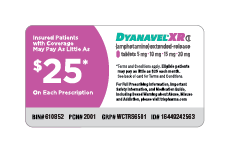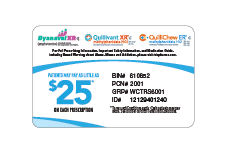About ADHD

About ADHD
ADHD is one of the most prevalent neurodevelopmental disorders, characterized by a persistent pattern of inattention and/or hyperactivity-impulsivity that interferes with functioning or development.1
Although most often diagnosed during childhood, patients with ADHD have waxing and waning symptoms, with 90% of patients with childhood ADHD continuing to experience symptoms into adulthood.2
Symptoms and Diagnosis
ADHD clinical guidelines are provided by the American Psychiatric Association in Diagnostic and Statistical Manual of Mental Disorders, Fifth Edition (DSM-5).3
According to the DSM-5, ADHD presents in 1 of 3 ways:

Predominantly
hyperactive-impulsive

Predominantly
inattentive

Combined
Symptoms are divided into two categories of inattention and hyperactivity-impulsivity that include behaviors like failure to pay close attention to details, difficulty organizing tasks and activities, excessive talking, fidgeting, or an inability to remain seated in appropriate situations. Children must have at least six symptoms from either (or both) the inattention group of criteria and the hyperactivity and impulsivity criteria, while older adolescents and adults (over age 17 years) must have at least five. Please click here for additional information on the DSM-5 criteria for diagnosing ADHD.
Treatment and Management3-7
Treatments for ADHD include medication, psychotherapy, education or training, or a combination of treatments that include close monitoring.
Treatment plans should be individualized to help the patient control symptoms, cope with the disorder, and manage relationships.7
Several different types of medications are FDA-approved to treat ADHD:
- Stimulants are the most widely used ADHD medications. These include methylphenidate and amphetamine medications.
- Nonstimulants include atomoxetine and viloxazine, guanfacine and clonidine.
Medications can affect patients differently and can have common side effects such as decreased appetite or sleep problems. Healthcare providers may need to switch treatment or adjust the dose to find the right balance between benefits and side effects.

Please visit TrisMedical.com for in-depth clinical information and a wide variety of resources on ADHD and related conditions.
Is methylphenidate or amphetamine right for my patient?
Although both methylphenidate and amphetamine have similar efficacy for ADHD, some patients may respond to or tolerate one or the other better.4
Tris Pharma offers amphetamine and methylphenidate treatment options for patients 6 years and older with ADHD.
Amphetamine Treatments
Methylphenidate Treatments
 DYANAVEL XR extended release oral suspension
DYANAVEL XR extended release oral suspension
Methylphenidate Treatments
 QuilliChew ER, the only once-daily extended-release methylphenidate tablet
QuilliChew ER, the only once-daily extended-release methylphenidate tablet
 Quillivant XR, the first once-daily, long-acting* liquid methylphenidate treatment
Quillivant XR, the first once-daily, long-acting* liquid methylphenidate treatment
Deciding whether to prescribe a methylphenidate such as Quillivant XR or QuilliChew ER, or an amphetamine such as DYANAVEL XR tablet or DYANAVEL XR oral suspension, depends largely on the individual needs of the patient, prior patient response or lack of response to methylphenidate or amphetamine, and patient preference for liquid vs tablet formulation.
Prior to treatment with Quillivant XR, QuilliChew ER, or DYANAVEL XR, patients should be assessed for the risk of abuse, known hypersensitivity and presence of cardiac disease. During treatment, careful prescription records should be maintained, and patients should be informed about abuse and monitored for signs of abuse and overdose. The need for continued stimulant medication use should be periodically reevaluated and, if necessary, dosage reduced or treatment discontinued.





